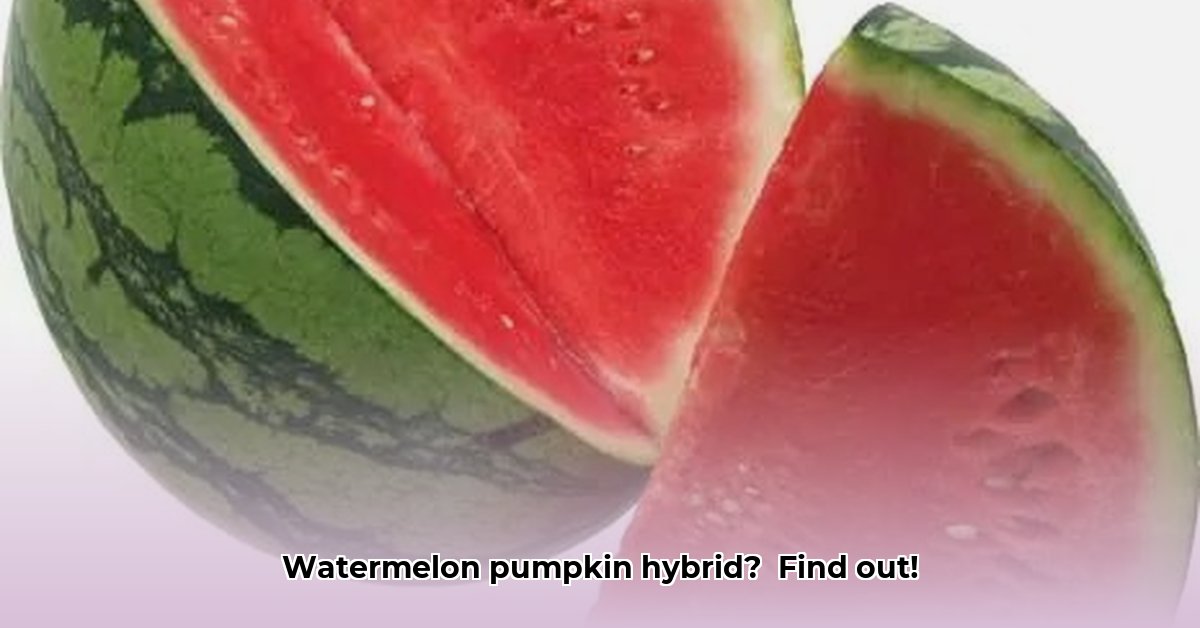
Separating Fact from Fiction: The Watermelon-Pumpkin Hybrid Mystery
So, you've heard the whispers, tjop! A watermelon-pumpkin hybrid – a super-fruit combining the juicy sweetness of one with the robust shape of the other. Sounds lekker, right? Let's unpack this juicy rumour and separate fact from fiction. Is this a real thing, or just a clever bit of garden gossip?
A Look at the Family Tree: Cousins, Not Twins
Watermelons and pumpkins are actually cousins! They both belong to the Cucurbitaceae family – the gourd family. This shared heritage theoretically allows for cross-pollination. But, hold your horses! It's not as straightforward as dusting pumpkin pollen onto a watermelon flower. These plants have differing chromosome numbers – it's like trying to fit a square peg into a round hole. The chances of a successful hybrid are extremely low.
The Great Imposter: Young Pumpkins in Disguise
Believe it or not, many so-called "watermelon pumpkins" are simply young pumpkins. Baby pumpkins often have smooth, pale skin, making them look remarkably like watermelons. As they mature, they develop their characteristic shape and colour. This is a common source of confusion, especially for those not familiar with pumpkin growth stages.
"Many people mistake immature pumpkins for watermelon-pumpkin hybrids," says Dr. Sarah Theron, Horticulturalist at Stellenbosch University. "The smooth skin and pale colour of young pumpkins can easily lead to this misconception."
Tales from the Garden: Anecdotal Evidence vs. Scientific Proof
Some gardeners claim to have grown watermelon pumpkins. These stories are interesting, but lack the scientific rigor needed for confirmation. Anecdotal evidence, while intriguing, cannot replace controlled experiments and published research. To establish a scientific fact, we need more than just a single, haastige, claim.
The Hybrid Possibility: A Remote Chance
While a commercially viable watermelon-pumpkin hybrid remains highly improbable, we can't entirely rule out the possibility of a rare accidental hybrid. Cross-pollination could occur, perhaps by chance in a field where both plants are grown close together. However, these accidental hybrids would likely be sterile – unable to produce seeds and create new generations. It would be a one-off event, not the start of a new species.
Actionable Intelligence: What Can You Do?
Here's how different stakeholders can approach this:
- Home Gardeners: Learn to identify different pumpkin growth stages. Knowing the difference between a young pumpkin and a watermelon is crucial!
- Seed Companies: Maintain significant spatial separation between watermelon and pumpkin plantings to minimise the chance of cross-pollination.
- Agricultural Researchers: Conduct controlled experiments to investigate the feasibility of creating a viable hybrid. Careful record-keeping and documentation are essential.
- Consumers: Be aware that a "watermelon pumpkin" is likely a young pumpkin. Don't be fooled by appearances!
Addressing Potential Problems and Solutions
Here's how to handle potential issues:
- Accidental Cross-Pollination: Plant watermelons and pumpkins far apart (at least a few hundred metres) and consider staggering planting times.
- Mistaking Young Pumpkins: Increased public awareness and readily available educational resources (with clear pictures!) are vital to dispel this confusion.
- Unpredictable Hybrid Traits: Thorough research through controlled experiments helps to understand and predict the outcome of any hybridisation.
The Verdict: (For Now)
The evidence strongly suggests that a fully functional, commercially viable watermelon-pumpkin hybrid is unlikely. The possibility of a rare, infertile hybrid remains, but it’s a long shot. It's much more likely that an oddly shaped fruit is simply a young pumpkin. More research might reveal more, but for now, enjoy your watermelons and pumpkins separately!